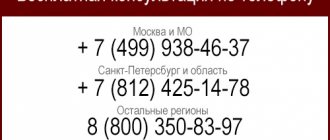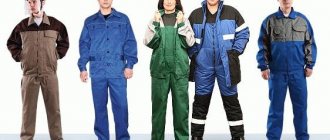Sample job description for forklift driver
General provisions
- When performing his duties, the forklift driver reports to the warehouse manager.
- The forklift driver is hired and dismissed from his position by the direction of the director of the company, upon the recommendation of the warehouse manager.
- A candidate for this position must meet the following requirements:
- secondary specialized specialized education;
- driving experience of at least 1.5 years;
- a certificate giving the right to drive a self-propelled vehicle of the appropriate class.
- The forklift driver must know:
- safety rules in the field of cargo transportation, their stowage and securing;
- modern traffic regulations, as well as fire and technological safety rules;
- established standards for cargo handling in the employing company;
- rules for filling out relevant company documentation;
- the rules by which the quality of the work performed is assessed;
- main categories of forklifts, their specific qualities and differences;
- the main brands of forklift manufacturers and their features;
- features of transportation of main types of cargo;
- rules for securing, stowing and carrying out loading and unloading operations for the main types of cargo;
- standards for preventive measures to prevent breakdowns of equipment used;
- ways to quickly resolve minor loader faults;
- principles of work in various types of warehouses;
- seasonal features of working with cargo;
- rules for storing forklifts in the parking lot, as well as handling them in garages and workshops;
- the basics of the technical functioning of the loader and its components;
- rules for checking the condition of forklifts, including after repair;
- rules for handling fuel and other fuels and lubricants used in the operation of the loader;
- rules for the care and storage of relevant equipment and tools.
- The forklift driver is guided by:
- relevant legislation;
- current traffic regulations;
- company documentation;
- provisions of the job description.
- If the driver is temporarily absent (illness, vacation, etc.), his functions are performed by another driver appointed by the warehouse manager.
Functions
The forklift driver is assigned the following functions at work:
- Driving the assigned vehicle.
- Ensuring the implementation of a set of prescribed works to carry out loading and unloading activities.
- Monitoring the correct stowage of cargo, its fastening and placement.
- Caring for the loader, including through timely replacement of spare parts and other components.
- Participation in sorting activities in the warehouse.
- Participation in events for storing pallets and other warehouse containers.
- Troubleshooting minor loader problems.
- Providing information to the warehouse management about potential problem areas in the area of its operations.
- Parking the loader.
- Monitoring the quality of forklift repairs.
- Carrying out the necessary preventive measures to ensure the proper condition of the loader.
- Compliance with traffic rules, fire and technical safety standards in your work.
- Storage of equipment, work clothes and tools provided by the company, as well as care for them.
- Maintaining the document flow required by company rules.
Responsibility
The forklift driver may be liable in the following situations:
- For violations of norms and laws committed at your workplace - in accordance with the rules of the relevant sections of the law.
- For failure to fulfill prescribed job duties - in accordance with articles of labor legislation and company rules.
- For damage caused to the company due to inappropriate actions - within the limits established in the relevant articles of legislation.
Rights
The forklift driver has the following rights:
- Make proposals to the warehouse manager to improve work processes.
- Receive information from company employees that is needed in their work activities.
- Receive branded workwear, equipment and tools at the employer’s expense, in the manner prescribed in the company’s rules.
- Refuse to operate the forklift if it is in poor technical condition.
- Demand from the warehouse manager the proper supply of the forklift with the necessary fuels and lubricants, spare parts and units, as well as the proper implementation of repair and preventative measures.
Features of working on various types of loaders
Depending on the features, purpose and characteristics, forklifts can be of several types:
- fork;
- frontal;
Working with each of them has its own characteristics.
Fork
This type of forklift is equipped with a lifting mechanism that resembles a fork, on which products are placed and moved around the territory. The forks can be positioned either at the front or at the side.
According to their design, loaders can be classified into:
- three-support - characterized by maneuverability and ease of control, which greatly facilitates work in rooms with a small area;
- four-legged - they are more stable, which allows you to lift heavy loads.
The material from which the coating is made may vary depending on whether the forklift will be used outdoors or in a warehouse.
An important point when operating a loader is the type of its engine, which can be:
- diesel;
- on gasoline;
- gas;
- electric motor.
Many factors depend on the choice of engine, for example, equipment power, noise level, fuel efficiency. The main criteria for selection are also working conditions, operating time and place of work. For outdoor use, a diesel or gasoline engine is usually used, since indoors the smell and exhaust can cause a lot of discomfort and harm.
Forklifts with a gas or electric engine are more environmentally friendly and are well suited for indoor work. As for the gas engine, such loaders usually have a small load capacity, no more than 5 tons.
You also need to take into account the position of the forks. Forklifts that have them on the side can be used to lift long loads, and are also convenient for working in narrow, cramped spaces.
Frontal
The front-end loader has a slightly different structure; instead of forks, it has a mechanism to which a bucket, drill, pliers or hammer can be attached. It is not suitable for warehouse work; its purpose is more suitable for transporting bulk materials, medium-sized cargo, drilling wells or removing snow. This must be taken into account when working as a specialist.
Front-end loaders can be of several types:
- universal - they can perform any work, since their working mechanism can change depending on need;
- special purpose - designed with characteristics that allow them to work in special working conditions, for example, in mines;
- bucket - the main tool of such equipment is, accordingly, a bucket, which makes it close to an excavator;
- quarry - self-propelled equipment that allows you to transport and unload cargo forward.
Working as a forklift driver is very responsible and interesting. Before you begin your work duties, you must be sure to read the job description and other regulations and standards in order to avoid mistakes and troubles in your work.
This video will tell you more about working as a forklift driver.
https://youtu.be/8WbiZirN-LA
The transport device is a loader, which is divided into two types of self-propelled/continuous action. The machine belongs to the category of special equipment and is used to move solid and bulk cargo on site.
The forklift driver belongs to the category of technical personnel and is required to know the technical equipment and operation of loading devices. The operator fulfills his duties and is responsible for the safety of colleagues and entrusted cargo in a certain area. Whether indoors or outdoors, the rights and responsibilities of the forklift driver (staffing schedule) remain identical, according to the compiled job descriptions for the personnel units of the enterprise.
Specifics of drawing up a job description
The current domestic legislation does not set out the parameters for drawing up a job description. As a result, employing companies can freely adapt the content of standard sample instructions to suit their needs. As for the form of the document, there are certain standards that are used when writing it. The usual instructions consist of the following sections:
- General section.
- Employee functions.
- His labor rights.
- Possible measures of liability.
To these standard sections, employers often add:
- Working conditions.
- Work connections.
- Parameters for assessing the quality of work.
- Qualification requirements.
Additional parts are especially in demand in large companies that seek to transfer as much of their activity as possible into a standardized documentary form, which greatly facilitates the interaction of hundreds of employees with many overlapping functions.
Attention! The instructions can be drawn up in a standard form suitable for any employee, or they can be individual in nature, being designed for a specific employee.
a common part
Here is a description of the main labor parameters. Key points include:
- who replaces the driver during his absence;
- to whom he is subordinate;
- on whom his hiring and dismissal depends;
- what provisions should the driver follow;
- what are the necessary qualification parameters of a candidate for the position, as well as the skills required of him.
If some of the points are quite typical, then those points where the requirements for skills and abilities are given strongly depend on the nature of the employer’s activities. In logistics services, construction companies or trading companies, the functions of a forklift driver may vary, as will the skills required for them.
Attention! A forklift driver may be required to have a separate type of license to operate categories of that vehicle. In addition, some companies hire forklift drivers of certain categories. All these features must be fixed in the qualification requirements.
Functions
It describes both the standard responsibilities of any driver and those that are specific to a forklift driver. The first type includes functions for ensuring transport of fuels and lubricants, monitoring the quality of repairs, maintaining order, and the like. The second type of responsibilities includes placing goods in the warehouse, monitoring their fastening and stowage, as well as other specific issues. It is necessary to separately mention the importance of compliance with traffic rules and relevant safety standards.
Attention! Many companies practice issuing work clothes, appropriate tools and equipment to drivers at their own expense. In this case, it is necessary to separately mention the employee’s obligation to carefully store and operate these things.
Responsibility
Here are descriptions of the main types of violations for which an employer can punish an employee. Punishments are given in the most general form, since the degree of guilt can only be revealed during appropriate proceedings, with the involvement of witnesses, evidence, etc.
Rights
This part is reserved for the list of employee rights. Typically, several standard items are listed here, common for all employees of the same rank. Technical employees, which include the driver, may have added rights to require the employer to carry out necessary repairs and refuse to drive if the vehicle is in critical condition.
The forklift driver is responsible not only for carrying out the relevant work, but also for the safety of his machine. Therefore, it is necessary to take a responsible approach to writing instructions, paying attention to the need to take into account the opinions of relevant specialists. Only after taking into account their edits can the document be submitted to the director of the company for signature. When drawing up instructions, it is also required to take into account the presence of all the parameters required in an official document: date, company details, decryption of signatures. The employee himself puts his signature in the hiring process. Other signatures may belong to persons with whom this appointment was agreed upon.









